When pro-wrestling fans think of WWE's famous Attitude Era, certain names are likely to come to mind. Stone Cold Steve Austin, The Rock, Mankind, Kane, The Undertaker, and Mr. McMahon were just a few of the period's top-level acts, but many mid-card talents also became major stars like The Godfather, Val Venis, the New Age Outlaws, and Trish Stratus.
One aspect about this ultra-popular time period is that although it didn't begin until late 1997, many other WWE Superstars had shown their proclivity for 'attitude' well before then.
Believe it or not, some examples of Attitude precursors could be found as far back as 1992, during the latter stages of Hulkamania. The majority of the others, however, came during WWE's New Generation era, a period that lasted from 1993 through roughly most of '97.
But of all the Superstars that came through the promotion during the mid-90s and foreshadowed what was to come at the end of the decade, these 10 personalities stood out the most.
WWE's huge mistake with John Cena revealed - Watch Here!
#10 Goldust
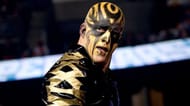
Undoubtedly, the most controversial character in WWE history was, at the time, Goldust when he debuted in late 1995. Previously known as Dustin Rhodes, the son of legendary wrestler the "American Dream" Dusty Rhodes, Goldust stepped out of his father's shadow when he returned to WWE as the wicked, bizarre wannabe-actor obsessed with the glitz and glamour of Hollywood.
More so than Goldie's obsession with old movies, the trait that sent some fans into a tizzy was his androgynous nature. Walking a line meant to trigger homophobia, Goldust's in-ring taunting of other male wrestlers, including some questionable physicality, was not something suitable for children, or so many viewers thought.
This lead to many parents calling and writing in complaining about the nature of the character. Goldust himself believes that his character was one of the major factors responsible for the start of the attitude era.
While WWE pulled back on the controversial persona by the end of 1996, even turning him babyface, the forthcoming Attitude Era welcomed this type of attention.
#9 Razor Ramon
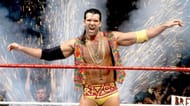
Although Scott Hall and the nWo were catalysts in introducing the pro-wrestling world to a more reality-based product, Razor Ramon was changing things up as early as 1992.
Well before the nWo or Attitude campaign were even a thought, the wrestler known as "The Bad Guy" debuted for the World Wrestling Federation with a Scarface-esque persona.
If ripping off the ultra-violent drug lord known as Tony Montana wasn't enough of an Attitude era precursor, Hall's portrayal of a street-wise Miami gangster made cheering the bad guy cool years before Stone Cold Steve Austin.
#8 Sycho Sid
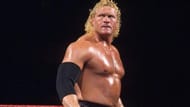
Although Razor Ramon garnered support as a villain soon after his 1992 debut, Sycho Sid - then known as Sid Justice - experienced a taste of things to come earlier that year. Teasing a heel turn by eliminating Hulk Hogan at the 1992 Royal Rumble, Sid was noticeably more popular than WWE's mega-babyface in their post-Rumble pull-apart.
So much so, WWE even dubbed over the crowd's reaction and re-recorded Bobby Heenan and Gorilla Monsoon's commentary track to position Sid as the unquestioned heel.
Several years later in Madison Square Garden, Sid once again generated massive fan support as the villain in Survivor Series '96's main event. Like the Knickerbocker Arena audience at Royal Rumble '92, the raucous MSG crowd loudly supported Sid's efforts over a white-meat babyface: a visibly shaken Shawn Michaels.
The swapping of roles for this one night led many fans to consider this as the unofficial starting point for the Attitude Era.
#7 Faarooq
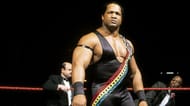
On the subject of Survivor Series '96, one of WWE's newest acquisitions debuted not only a new look, but a new supporting group as well that night. Shortly after this event, the Nation Of Domination began playing the role of a militant group that focused on the poor treatment of minorities, specifically African-Americans.
With questionable verbiage used during incredibly controversial promos, Faarooq was very effective in playing the oppressed NOD leader, all before WWE took RAW to a TV-14 rating.
The Nation was originally meant to be a vehicle to get Faarooq over, but a toned-down version of it, ironically seen during the much more liberal Attitude Era, helped boost The Rock - not Faarooq - to stardom.
#6 Chyna
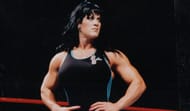
The Attitude Era became popular for more than just physical matches and questionable language, the women of WWE played a huge role in the company's success as well.
While there were certainly gratuitous displays of the female figure with the objectification of women, Chyna was WWE's lone female bright spot that began shining without this crutch.
Upon her February 1997 debut, the "Ninth Wonder of the World" got over almost immediately thanks to her ringside presence and displays of strength.
Rather than getting reactions by how she looks, Chyna dominated the male athletes as Hunter Hearst Helmsley's bodyguard and helped elevate the blue-blood. She later broke out on her own and blaze even more trails as a pioneer of WWE's women Superstars.
#5 Jim Ross
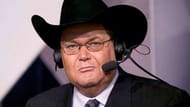
Although Jim Ross was the voice of the WWE during its most popular time period, his short-lived 1996 heel turn was an early example of an Attitude era trope - the 'worked shoot'. Not only did JR voice his supposed frustrations with the company in a live promo, but he also called out Vince McMahon as the owner.
Up until then, the promotion was run seemingly, by on-air authority personalities such as Jack Tunney or Gorilla Monsoon - but not Vince!
JR's disgruntled employee persona didn't last long, but it was definitely a predecessor to some of the Attitude Era's most controversial angles
#4 Mankind
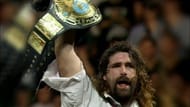
Like JR, Mankind was an icon of WWE's Attitude Era, but his influences on the edgier product began long before the "Three Faces of Foley". Dude Love and even Cactus Jack made numerous appearances during the late 90s and early 2000s, but it was Mick Foley's 1996 portrayal of Mankind that really presented the WWE with a fresh look on heels.
In April '96, Mankind debuted as a masked, boiler-room dwelling, rat-petting, mutilated freak that was incredibly dark for the time period. In addition to his disturbing appearance, Mankind worked a very physical in-ring style that would later inspire many Attitude Era matches in which brutality was at the forefront.
His Boiler Room Brawl and Buried Alive matches, both against The Undertaker, plus Mind Games classic with Shawn Michaels capped off a stellar year for WWE's newest villain and it set the stage for what was yet to come.
#3 Sunny
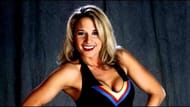
Longtime WWE fans might remember Sunny as the WWE's "Most Downloaded Celebrity" on America Online. Like AOL, Sunny was a staple of the mid-to-late 90s as she brought something to WWE that had not been seen very much before: sexuality.
Shortly after debuting as the Body Donna manager of real-life boyfriend Chris Candido (Skip in WWE), Sunny began appearing in swimsuit photo shoots and revealing vignettes on WWE television. Clearly hoping to grab the attention of the coveted young male demographic, Sunny became a bonafide star despite never actually competing in the ring.
The predecessor for the likes of Sable, Trish Stratus, and Stacey Keibler, Sunny introduced WWE fans to a theory that they would use for decades after - sex sells! And she did it all before the Attitude Era made it the norm.
#2 Vader
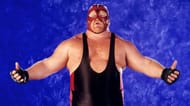
The first man to unofficially break the "no touching" rule for WWE authority figures, Vader burst onto the promotion's scene in early 1996 by knocking then-President Gorilla Monsoon off television.
The Mastodon was one of the more physical wrestlers of this New Generation time period and his work often pushed the envelope, leaving many fans questioning if what they saw was real. Ahead of his time, Vader gave many fans a taste of "Attitude" well before it became the company's slogan.
In addition to the total destruction of WWE's President, Vader's physicality led to several memorable moments during the pre-Attitude era. Who could forget his stellar performance as a bloody mess at In Your House: Final Four or the brutally-stiff debut match of Ken Shamrock from May 1997's In Your House?
While the Attitude Era began in late-1997, Vader had attitude well ahead of, as Vince McMahon called it, "a far more innovative and contemporary creative campaign".
#1 Diesel
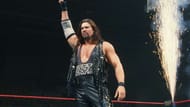
Almost two years before Stone Cold Steve Austin became the hottest wrestler on the planet as a no-nonsense tough guy that dressed in black, Kevin Nash as Diesel provided a rough outline for the character type.
The trash-talkin', anti-authority persona that Austin made famous, Diesel created the night after Survivor Series '95. On this night, Diesel delivered a 'shoot promo' directed towards Vince McMahon, not too dissimilar to the aforementioned Jim Ross promo that came a year later.
Like Scott Hall's return to WCW six months later, Diesel interrupted a match on RAW to deliver what was one of the best, most creative promos of the time. Diesel blamed Vince for turning him into a "corporate puppet" and making him soft.
After the promo, Diesel reasserted his dominance as the anti-authority former champion that wanted to stick it to Vince McMahon. Sound familiar?
Paul Heyman's downfall need to be studied - Check!

